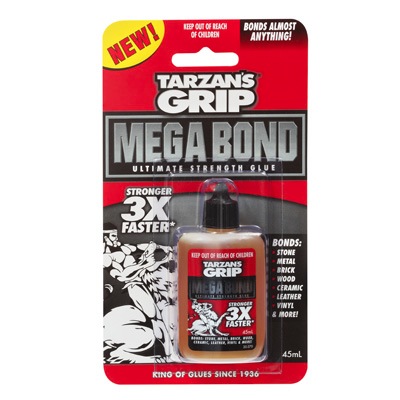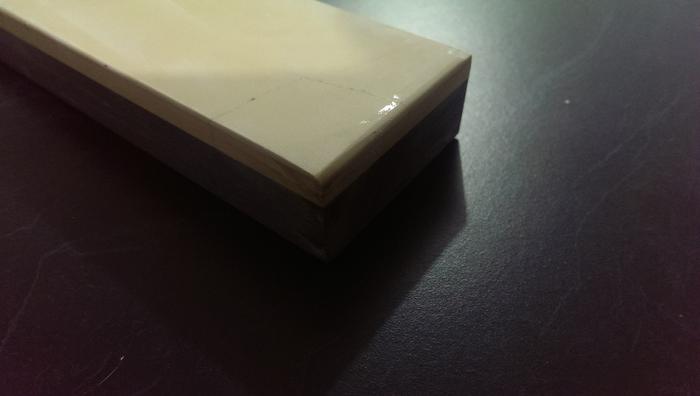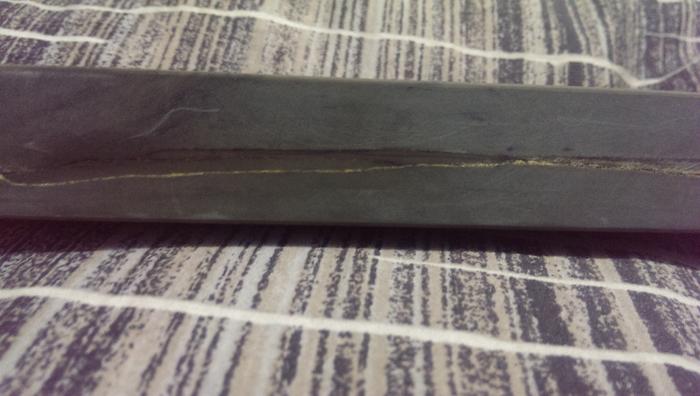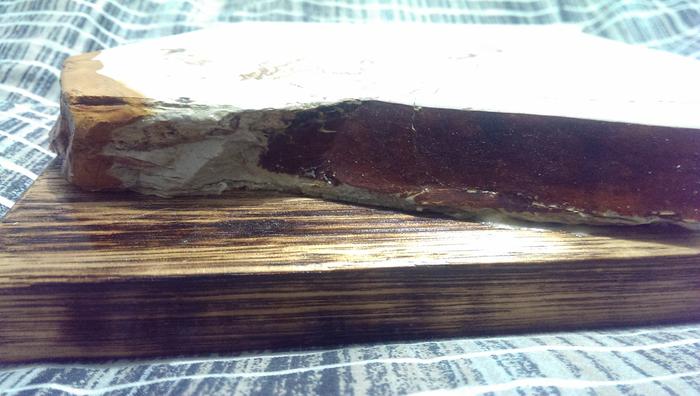Results 11 to 20 of 23
-
12-18-2013, 10:40 PM #11

I spend hours looking at all the different glues to fix a stone that broke a while back.
Ended up using this for several reasons.
-Strength
-Waterproof
-Adheres to damp surfaces (Its recommended to wet the stone when gluing)
-Fast curing - less than 30 minutes
-Expands slightly, filling any chips or small gaps.

Since then i have used it for a few damaged stones including a Coticule and gluing a wooden base to the back of a couple of jnats, all have turned out well
Chris.
-
12-19-2013, 04:28 PM #12
-
12-19-2013, 08:58 PM #13
-
12-19-2013, 09:04 PM #14

Below are a few repairs..
The stone cracked on the corner

This cracked in the middle

This was glued to wood so it wouldn't crack. You can see in this pic how well it expands, kinda like a foam when its not clamped.

Last edited by Brighty83; 12-19-2013 at 09:09 PM.
Chris.
-
12-19-2013, 09:11 PM #15I used Nakayamas for my house



- Join Date
- Aug 2009
- Location
- Des Moines
- Posts
- 8,664
- Blog Entries
- 1
Thanked: 2591
I have glued many Jnats to bases with gorilla glue and, no problems so far after years with a lot of use.
Stefan
-
12-19-2013, 09:51 PM #16

PUR adhesives are safe when cured, but can cause allergic reaction and irritation on use.
In some cases it can cause isocyanate sensitization (chemical asthma).
Here it is MSDS for example: http://hybris.cms.henkel.com/henkel/...US&language=ENLast edited by Nikolay; 12-19-2013 at 09:54 PM.
-
12-19-2013, 11:59 PM #17I used Nakayamas for my house



- Join Date
- Aug 2009
- Location
- Des Moines
- Posts
- 8,664
- Blog Entries
- 1
Thanked: 2591
-
12-20-2013, 12:04 AM #18
-
12-20-2013, 01:40 AM #19Senior Member



- Join Date
- Apr 2008
- Location
- Essex, UK
- Posts
- 3,816
Thanked: 3164
I have used gorilla glue for the same application two or three times and it works really well.
If your hone is 50 yrs old then Stefan is correct, they would have used a resin obtained from pines, called rosin - the same stuff they use in powdered form on violin bows.
It becomes fluid on heating and solid when set. Water would not affect it. Some coticules are notorious for coming apart at natural cleavage lines, the types you see with thin black lines (la veinette) have already split in ancient times and the black (manganese dioxide aka pyrolusite) has flowed into the cracks.
Regards,
NeilLast edited by Neil Miller; 12-20-2013 at 08:41 AM.
-
The Following User Says Thank You to Neil Miller For This Useful Post:
Nikolay (12-20-2013)
-
12-20-2013, 03:41 PM #20

The real trick to adhesives is to select the right one for the application.
That is why I started this thread. As a handy-guy i have experience with nearly every concoction mentioned, but none with rocks. We all see here that there is no consensus on rocks.
It appears that everything will work, just depends upon what you're comfortable with and/or which advice one trusts to follow.
Personally, as the OP, I'm going to re-warm the original (resin)adhesive to see how it responds (as suggested by adrspach above, thanks that is information i likely wouldn't have found otherwise). The advantage of this method is that there's nothing to buy, and it's period-product correct.
If that doesn't work to suit me, I'll use a few dollops of JB gray, as it is "in house" and quite familiar to my paws.
cheersLast edited by WadePatton; 12-20-2013 at 03:47 PM.


 8Likes
8Likes LinkBack URL
LinkBack URL About LinkBacks
About LinkBacks






 Reply With Quote
Reply With Quote



